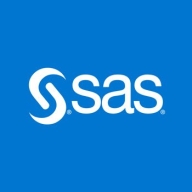

SAS Access and Jitterbit Harmony compete in the realm of data integration and connectivity solutions. Jitterbit Harmony appears to have an advantage in flexibility and scalability, offering a wider range of integration capabilities and advanced API management.
Features: SAS Access supports seamless data access across various sources, particularly strong in SAS environments with extensive database support and data exchange capabilities. Jitterbit Harmony provides comprehensive integration features with cloud connectivity, API creation, and management, making it a diverse integration platform.
Ease of Deployment and Customer Service: SAS Access offers straightforward deployment for SAS-centric organizations, supported by detailed documentation. Jitterbit Harmony provides a cloud-based deployment with an intuitive platform, backed by strong customer service, and ease of integration across cloud environments.
Pricing and ROI: SAS Access involves higher setup costs that can impact short-term budgets but offers strong ROI for enterprises deeply invested in SAS environments. Jitterbit Harmony has a flexible pricing model with a lower cost of entry, appealing to organizations seeking cost-effective integration across various platforms. This can lead to a faster ROI compared to the upfront investment with SAS Access.
| Product | Market Share (%) |
|---|---|
| Jitterbit Harmony | 0.6% |
| SAS Access | 0.4% |
| Other | 99.0% |


| Company Size | Count |
|---|---|
| Small Business | 8 |
| Midsize Enterprise | 3 |
| Large Enterprise | 1 |
Jitterbit Harmony offers an advanced integration platform that simplifies data transformation, helps users quickly connect apps, and automates workflows, streamlining complex business processes efficiently.
Designed to meet the high demands of modern businesses, Jitterbit Harmony enables seamless integration across cloud and on-premise environments. By leveraging its powerful tools and user-friendly design, users can accelerate innovation, reduce operational costs, and enhance productivity. It bridges the gap between traditional and emerging technologies, ensuring organizations can adapt quickly to market changes and remain competitive.
What are the key features of Jitterbit Harmony?Jitterbit Harmony finds its application across numerous industries, from enhancing data integration in the healthcare sector to optimizing supply chain logistics in manufacturing. It supports financial institutions by improving transaction processing and facilitates real-time data connectivity in retail environments, making it a versatile choice for diverse industries looking to innovate rapidly.
We monitor all Data Integration reviews to prevent fraudulent reviews and keep review quality high. We do not post reviews by company employees or direct competitors. We validate each review for authenticity via cross-reference with LinkedIn, and personal follow-up with the reviewer when necessary.